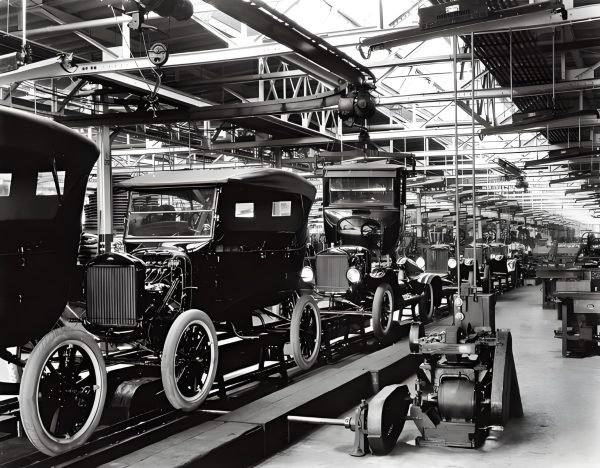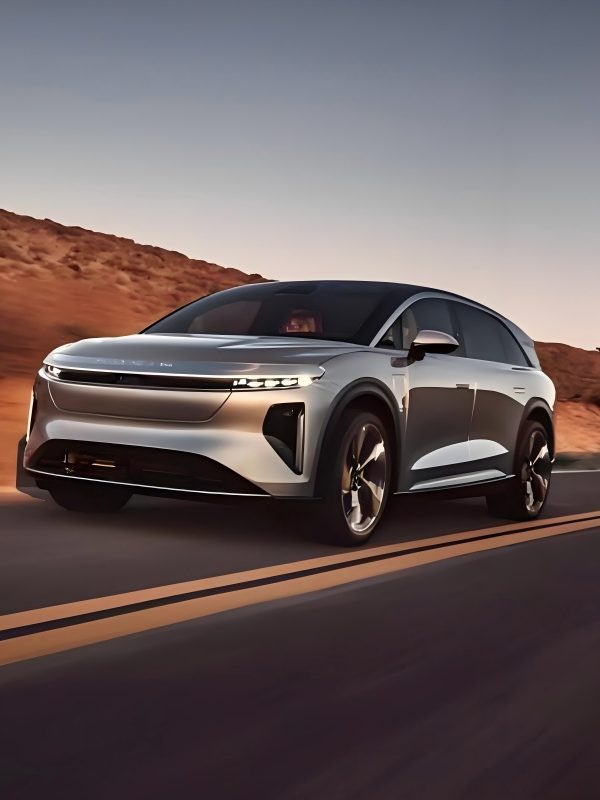Pioneering Beginnings
As early as 1830, Scottish inventor Robert Anderson successfully mounted an electric motor on a carriage. What is a battery? Even in these early days, it was recognized as a device that stores chemical energy and converts it to electrical energy. Then, in 1834, Anderson collaborated with Thomas Davenport to create the world's first battery-powered electric vehicle using non-rechargeable glass-encapsulated batteries.
In 1873, Englishman Robert Davidson produced the world's first practically usable electric vehicle using non-rechargeable, single-use batteries. This achievement predated the gasoline-powered automobiles invented by Germans Gottlieb Daimler and Karl Benz by more than a decade, though it wasn't internationally recognized. What is a battery's role in transportation? These early experiments began to demonstrate its potential to revolutionize mobility.
A significant milestone came in 1881 when French engineer Gustave Trouvé assembled the world's first lead-acid battery-powered tricycle. This vehicle, which used a rechargeable storage battery and resembled the Prototype of modern automobiles, holds great significance in the history of electric vehicles and is widely regarded as the world's first true electric car. What is a battery without recharging capability? These developments answered that question by showcasing the importance of rechargeable technology.
Early Battery Technology
Batteries were the sole energy storage devices for early electric vehicles. In the 19th century, power batteries were far from meeting human needs for high-speed transportation in terms of energy density, power density, and service life.
Early Electric Vehicle Adoption
By 1900, electric vehicles accounted for 15,755 of the cars manufactured in the United States, compared to 1,684 steam-powered vehicles and only 936 gasoline-powered ones.
The Development of Lead-Acid Batteries
On March 26, 1860, French scientist Gaston Planté invented the first lead-acid battery. What is a battery's journey from invention to commercialization? Planté's creation underwent continuous improvement over more than 20 years, making significant progress in system design and manufacturing processes, gradually gaining commercial value.
Following this breakthrough, rechargeable alkaline batteries—nickel-cadmium and nickel-iron batteries—also entered the market. By the end of the 19th century, due to the mass production and application of various rechargeable batteries, electric vehicles became popular in some industrialized countries. What is a battery's impact on society? These developments began to provide a clear answer, enabling new forms of transportation.
In 1899, Frenchman Carmen Cina drove a bullet-shaped electric vehicle powered by a 44kW dual electric motor with rear-wheel drive, setting a speed record of 106 km/h and achieving a range of approximately 290 km. This demonstrated the potential of electric vehicles when paired with improved battery technology.
The Golden Age and Subsequent Decline
By 1912, hundreds of thousands of electric vehicles were in use worldwide, employed extensively in taxis, delivery trucks, buses, and other applications. However, the golden age of electric vehicles lasted only about 20 years. What is a battery's limitation when compared to fossil fuels? This question became increasingly relevant as petroleum production surged worldwide, growing tenfold between 1890 and 1920.
In 1911, Charles Kettering invented the internal combustion engine automatic starter technology. Then, in 1913, Ford established the internal combustion engine automobile production line, bringing these vehicles into an era of standardization and mass production. Their advantages of convenience and low price gradually became apparent.
Despite rapid advancements in power battery technology for electric vehicles during the same period—between 1910 and 1925, stored energy increased by 35%, lifespan grew by 300%, driving range improved by 230%, and prices decreased by 63%—gasoline maintained significant advantages. What is a battery's energy density compared to gasoline? Gasoline's mass energy density was 100 times that of batteries, and its volume energy density was 40 times greater, with much shorter refueling times. These factors meant electric vehicles could not compete with internal combustion engine vehicles for an extended period.

Early Electric Taxis
Electric vehicles were particularly popular as taxis in the early 1900s due to their quiet operation and ease of use in urban environments.

The Rise of Mass-Produced Gasoline Cars
Ford's assembly line revolutionized automobile production, making gasoline-powered cars affordable for the masses.
Interwar and Post-War Developments
After World War I, the focus of electric traction technology shifted to public transportation, such as trains, trams, and trolleybuses. However, due to slow technological development, limited operating areas, restrictions in power supply networks, and high construction and maintenance costs, trams and trolleybuses were gradually replaced by diesel-powered internal combustion engine vehicles in many regions.
Following World War II, with oil supply shortages in Europe and Japan, electric vehicles showed signs of recovery in some areas. By the 1960s and 1970s, severe air pollution caused by mass use of internal combustion engine vehicles and geopolitical and national security issues resulting from excessive dependence on oil renewed societal interest in electric vehicles.
Regulatory Milestones and Research Initiatives
In 1976, the U.S. Congress passed "The Electric and Hybrid Vehicle Research Development and Demonstration Act," allocating $160 million to fund electric vehicle development. What is a battery's role in addressing environmental concerns? This legislation recognized batteries as critical to reducing emissions from transportation. In 1977, the first International Electric Vehicle Conference was held in the United States, featuring over 100 electric vehicles.
| Year | Milestone | Significance |
|---|---|---|
| 1978 | Federal Nonnuclear Act | Increased funding for EV research and development |
| 1988 | Los Angeles EV Proposal | Plan for 10,000 electric vehicles including trucks and passenger cars |
| 1989 | CARB Zero-Emission Vehicle Mandate | Required 2% of vehicles sold in California to be zero-emission by late 1990s |
| 1990s | USABC Formation | Established battery development targets for electric vehicles |
What is a battery's development roadmap? The U.S. Advanced Battery Consortium (USABC), established around this time with major U.S. automakers (General Motors, Ford, and Chrysler) playing key roles, provided substantial funding to support power battery development and established short-term, mid-term, and long-term battery technology development plans and technical requirements.
USABC Battery Development Targets
| Performance Indicator | Unit | Mid-term | Transitional | Long-term |
|---|---|---|---|---|
| Mass Energy Density (3h rate) | Wh/kg | 80-100 | 150 | 200 |
| Volumetric Energy Density (3h rate) | Wh/L | 135 | 230 | 300 |
| Mass Power Density (80% DOD/30s) | W/kg | 150-200 | 300 | 400 |
| Cycle Life (80% DOD) | cycles | 600 | 1000 | 1000 |
DOD: Depth of Discharge
The Lithium-Ion Battery Revolution
In 1991, the rechargeable lithium-ion battery was introduced. What is a battery's potential when using lithium-ion technology? This question was answered in 1995 when Sony Corporation of Japan developed the first 100Ah lithium-ion power battery for electric vehicle applications, demonstrating its superior performance and attracting widespread attention.
To date, lithium-ion power batteries are considered one of the most promising power storage solutions for electric vehicles and have been widely adopted in various electric vehicle models. The vast majority of recently launched electric vehicle products use lithium-ion power batteries, forming an application system dominated by lithium cobalt oxide, lithium manganese oxide, lithium iron phosphate, and nickel-cobalt-manganese (NCM) lithium-ion power batteries.
What is a battery's future in transportation? Other battery technologies such as zinc-air batteries and sodium-sulfur batteries have also been used in electric vehicles over the past century, but none have become mainstream due to issues related to their characteristics, price, and manufacturing processes.
Emerging Battery Technologies
Magnesium Batteries
In 2003, the D. Aurbach research team at Bar-Ilan University in Israel developed promising rechargeable magnesium batteries, which offer high energy density, low cost, operational safety, and environmental friendliness.
What is a battery's main challenge when using magnesium? Development has been hindered by limited cathode materials for magnesium ion insertion and complex electrochemical behavior on magnesium electrode surfaces requiring suitable electrolyte systems to address passivation film issues.
Aluminum-Air Batteries
As non-rechargeable batteries, aluminum-air batteries have existed since the 1960s and offer very high energy density. However, anode corrosion producing hydrogen during discharge causes excessive consumption of anode material and increased internal electrochemical losses.
What is a battery's potential for extreme range? In February 2014, a 100kg aluminum-air battery demonstrated the ability to store enough energy for a 3000km range, with innovative solutions to traditional limitations.
CTP (Cell To Pack) Technology
CATL (Contemporary Amperex Technology Co. Limited), founded in 2011 in China as a spin-off from consumer battery giant ATL, developed third-generation CTP technology, also known as "Qilin Battery," officially released in April 2022.
CTP technology reduces or even eliminates modules, directly forming batteries from cells. Without changing materials, it increases energy density and reduces battery costs by reducing volume. CATL stated that CTP technology can increase energy density by 20% and reduce costs by 10%.
Modern Electric Vehicle Revolution
At the 2014 Beijing International Auto Show, companies such as Toyota, Honda, Hyundai, and SAIC showcased their latest fuel cell vehicle models. On November 18, 2014, Toyota launched the world's first commercial fuel cell vehicle, the Mirai, which can be refueled with hydrogen in just 3 minutes and has a range of 650km.
Hydrogen fuel cell vehicles offer numerous advantages including zero or near-zero emissions, high fuel efficiency, smooth operation, and no noise. Additionally, hydrogen has ten times the energy density of on-board lithium-ion batteries, allowing longer distances between refueling. Fuel cells also have 2-3 times the energy conversion efficiency of internal combustion engines.
What is a battery's role in the rise of Tesla? Models like the Model S, a four-door all-electric luxury sports sedan, became global sensations. Subsequent models including the Model 3, Model X, and Model Y have also captured significant market attention, driving widespread adoption of electric vehicles.

Emerging New Energy Vehicle Companies
- Li Auto (2015)SUVs with extended-range technology
- Xpeng (2014)Smart EVs with advanced autonomy
- Nezha (2014)Affordable electric vehicles
- NIO (2014)Premium EVs with battery swapping
- Leapmotor (2015)Technology-focused electric vehicles
Timeline of Key Developments
1830-1834
Robert Anderson and Thomas Davenport develop early electric vehicles using non-rechargeable batteries. What is a battery's potential for transportation? These experiments provided early answers.
1860
Gaston Planté invents the first lead-acid battery, laying groundwork for practical energy storage. What is a battery's importance? This invention demonstrated its potential beyond laboratory experiments.
1881
Gustave Trouvé assembles the first lead-acid battery-powered tricycle, recognized as the world's first true electric vehicle with rechargeable technology.
1899-1900
Carmen Cina sets electric vehicle speed record (106 km/h). By 1900, electric vehicles outnumber gasoline-powered cars in the United States by nearly 17:1.
1911-1913
Charles Kettering invents the electric starter for internal combustion engines. Ford establishes mass production line, beginning the decline of early electric vehicles.
1970s
Oil crises and environmental concerns renew interest in electric vehicles. U.S. legislation provides funding for EV research. What is a battery's role in energy security? This era highlighted its strategic importance.Optical Transceiver.
1991-1995
Rechargeable lithium-ion battery introduced (1991). Sony develops 100Ah lithium-ion power battery for EVs (1995), revolutionizing the industry.
2010s-Present
Tesla leads EV revolution. CATL and other companies advance battery technology. Hydrogen fuel cell vehicles enter market. What is a battery's future? Continuous innovation points to ever-higher performance and affordability.Electronic shelf labels.
Conclusion
Throughout the development history of power batteries and electric vehicles, safety and energy density have always been the primary factors determining the development of the battery industry. Battery performance guarantees the driving range of electric vehicles, and the demand for electric vehicles has driven the expansion of battery production and performance improvements.Related Hydraulic Spare Parts.
What is a battery's future in transportation? Today, various new high-energy power batteries continue to be reported. It is conceivable that with technological progress, power batteries will inevitably develop toward higher specific energy, higher specific power, longer life, lower price, and greater safety and reliability. Related lithium battery technology.
Learn more